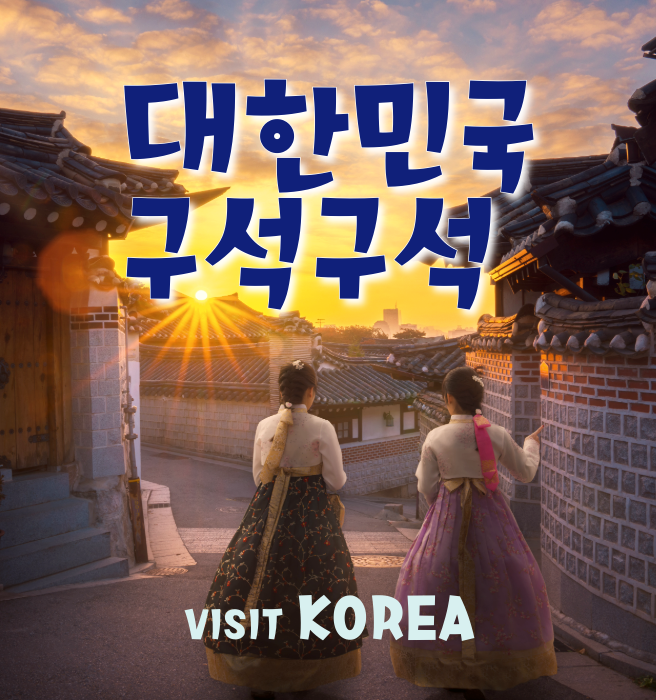Rediscovering Korea’s Soul at the 2025 Joseon Royal Tombs Festival
“Instruments are vessels that channel the voice of the heavens through human hands, echoing the universe’s own chords,” declares a performer, as the stage conjures a vivid bridge between the Joseon era of 500 years ago and the present day.

The 2025 World Heritage Joseon Royal Tombs Festival, which kicked off last Friday, centers on a signature performance titled Seongjong, Planting the Light. The festival’s theme, “The Joseon Royal Tombs: 500 Years of Splendor,” celebrates the enduring legacy of Korea’s royal heritage through a vibrant blend of performances, exhibitions, and hands-on experiences that fuse tradition with modernity.
Director Shin Dong-il, who helms the festival’s main performance, drew inspiration from the Akhak Gwebeom (악학궤범), a seminal 1493 music treatise commissioned by King Seongjong. This foundational text, which systematized the principles, structures, and performance techniques of Joseon music, remains a cornerstone of Korean traditional music studies. “We wanted to capture the essence of the Joseon spirit through art, rooted in the Akhak Gwebeom,” Shin explains. “When you trace the origins of today’s globally celebrated K-culture, you find its roots in Seongjong’s artistic legacy and his reverence for ye-ak.Those seeds, planted centuries ago, have blossomed into the cultural fabric of modern Korea.”

Shin’s vision extends beyond viewing Joseon history as a distant past. “I want audiences to see it as a living, breathing present,” he says. “This moment we’re experiencing now is also the future someone once dreamed of.” The performance, staged at Seonjeongneung (선정릉) on October 18 and 19, invites visitors to feel that timeless connection.
Among the festival’s highlights are Joseon Neunghaeng (조선능행) and The Royal Stroll (왕가의 산책). Joseon Neunghaeng is a dynamic procession that recreates the grandeur of a Joseon king and his retinue, complete with traditional chwita military bands, royal palanquins, and scenes of royal benevolence toward the people. This moving spectacle, evoking the dignity and compassion of Joseon rulers, will take place at Seooreung (서오릉) on October 18–19 and at Donggureung (동구릉) from October 15–26.
The Royal Stroll, a nighttime program, transforms the wooded path from Seonjeongneung’s ticket office to its performance stage into an immersive experience. The trail is divided into three thematic sections—“The Tunnel of Records,” “The Path of Splendor,” and “The Journey Through Time”—where LED panels bring the Annals of King Seongjong (성종실록) to life through light and video. Typically closed at night, this area opens specially for the festival. From October 21 to 26, visitors can also enjoy performances featuring traditional instruments like the gayageum (가야금) and haegeum (해금), immersing themselves in Joseon’s aesthetic through a symphony of light and sound.

A Cultural Heritage Administration official notes, “The Joseon Royal Tombs Festival is more than a celebration—it’s a platform to share the historical and aesthetic value of the royal tombs with the world. Visitors will see how Korea’s traditions continue to shape its modern culture.”
Running through October 26, the 2025 World Heritage Joseon Royal Tombs Festival unfolds across nine royal tomb sites in Seoul and Gyeonggi Province: Seolleung and Jeongneung (선릉·정릉), Taereung and Gangreung (태릉·강릉), Uireung (의릉), Donggureung (동구릉), Hongneung and Yureung (홍릉·유릉), Seooreung (서오릉), Yungneung and Geonneung (융릉·건릉), Gimpo Jangneung (김포장릉), and Yeongneung and Yeongneung (영릉·영릉). This festival, blending the elegance of Joseon’s ye-ak spirit with contemporary creativity, offers a profound journey into the heart of Korean culture—a chance to witness the roots and resonance of a nation’s heritage.
Oh Ha Eun medi·K TEAM press@themedik.kr
Headlines
-
 Healthcare
Healthcare
Finding a Lump in Your Breast: Why It’s Not Always Cancer and What to Do Next
-
 Healthcare
Healthcare
As Winter Bites, Pet Kneecaps Slip: The Hidden Threat of Patellar Luxation in Dogs and Cats
-
 Wellness
Wellness
Korean Herbal Tea Culture: A Wellness Tradition for Body and Mind
-
 Healthcare
Healthcare
How to Counteract Caffeine’s Effects for Better Sleep
-
 News
News
Celltrion Launches Aptozma Biosimilar in U.S. Market: 35% Price Reduction and Blue Cross Coverage for Autoimmune Treatment
-
 Healthcare
Healthcare
Blue Light: Is It Really a Threat to Your Eyes and Health?
-
 Healthcare
Healthcare
The Hidden Health Risks of Your Showerhead: Why Regular Cleaning Matters
Doctors & Hospitals
-
 Healthcare
Healthcare
Eczema: Blending Conventional Relief With Korean Herbal Medicine for Lasting Skin Health
-
 Healthcare
Healthcare
Warts: Beyond Simple Removal—Focus on Immunity for Lasting Relief
-
 Healthcare
Healthcare
AI-Powered Smartphone Tool Opens New Path for Early Autism Screening in South Korea
-
 News
News
Korean Surgeon Pioneers Remote Bladder Cancer Surgery Training Using Da Vinci 5 Platform
-
 Healthcare
Healthcare
Myocardial Infarction Risks Surge in Fall: How to Protect Your Heart
-
 Healthcare
Healthcare
Innovative Korean Acupuncture Therapy Offers Hope for Acne Scar Treatment
-
 Healthcare
Healthcare
Thyroid Surgery and Recovery: Essential Post-Operative Care Guide






